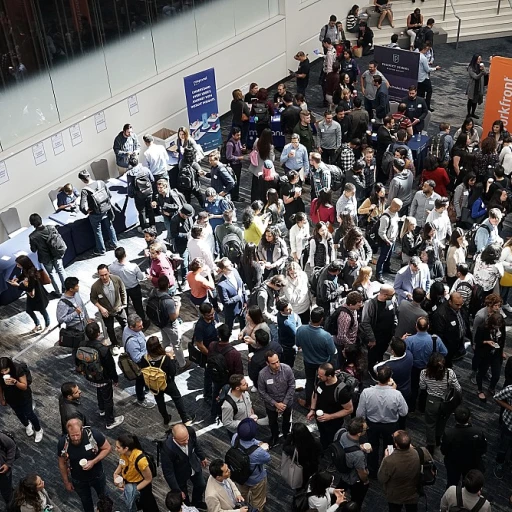
Understanding the Role of AI in HR
The Evolution of AI in Workforce Management
Artificial Intelligence (AI) has become a pivotal component in modern human resources operations, particularly in crafting Performance Improvement Plans (PIPs). By automating and refining various HR processes, AI not only enhances employee performance but also fosters a culture of continuous improvement.
Traditionally, constructing a performance improvement plan template demanded considerable human effort, time, and expertise. Nowadays, AI technologies offer a strategic advantage by streamlining these processes, providing actionable insights to employee managers, and helping set clear goals and expectations.
- AI delivers tailored feedback and suggestions based on specific performance issues an employee faces.
- Automated progress tracking and regular check-ins ensure continual team member development and alignment with organizational goals.
- AI's data-driven approach enables HR teams to uncover areas of improvement, fortifying the pip process and supporting team dynamics.
Additionally, AI-powered platforms personalize action plans, paving the way for effective performance review sessions. These platforms can handle vast amounts of data, offering valuable insights, which enhance the performance management strategies of organizations. By guiding managers in developing proficient development plans, AI proves to be an indispensable ally in nurturing a productive workforce.
To explore how you can further boost employee evaluations with AI tools, check the comprehensive insights available here.
Key Components of a Performance Improvement Plan Template
Essential Components for Structuring the Plan
When developing a Performance Improvement Plan (PIP), constructing a comprehensive and effective template is crucial. It should serve as a roadmap for helping employees realign their performance with organizational goals and expectations. Here’s a breakdown of what a solid PIP structure should encompass:- Clear Objectives and Goals: Clearly defined objectives are pivotal. When meeting with a team member, managers must outline specific areas of improvement needed. The plan should clearly specify what improvement looks like and the performance expectations that are being aimed for.
- Performance Issues Identification: It's essential to concisely outline the performance issues that have been observed. By providing examples of where the employee has not met expectations, managers draw a clear line for what needs to change.
- Actionable Steps: A PIP should include a detailed action plan. Specific steps need to be outlined that the employee will take to improve, which may involve skills training or behavioral changes. This could be in the form of personalized development plans that align with individual learning styles.
- Support and Resources: The PIP template must also indicate what support and resources will be available to the employee. The manager should offer any helpful tools, guidance, or mentorship that could assist in meeting the improvement goals.
- Regular Check-Ins and Feedback: Frequent and regular check-ins are important for monitoring progress. Scheduled meetings provide an opportunity for feedback, allowing both parties to assess what's working and where adjustments might be necessary.
- Timeline and Evaluation: Incorporate a timeline within the PIP that outlines deadlines for achieving certain milestones, coupled with a final evaluation date. This keeps the employee on track and provides a clear end point for review.
- Final Review and Outcomes: At the end of the PIP period, a performance review should assess overall progress. This will determine whether the goals have been met and what the next steps should be.
AI-Powered Tools for Monitoring Employee Performance
Harnessing AI for Employee Performance Tracking
Artificial intelligence stands at the forefront of transforming how managers monitor and enhance employee performance. Implementing AI-powered tools plays a pivotal role in crafting a Performance Improvement Plan (PIP) that aligns with your team’s goals. With AI, organizations can track specific performance issues and progress, providing clear and actionable insights for both managers and employees. AI tools offer the ability to analyze large volumes of data quickly, uncovering patterns that might otherwise remain hidden. This capability leads to more accurate and timely feedback, which is essential for effective performance management and improvement plans. Employees benefit from knowing precisely where they stand in their improvement journey, while managers can easily identify areas of improvement and tailor support accordingly. Regular check-ins facilitated by AI tools ensure that there is continuous feedback and support, which is crucial for achieving the objectives set out in the improvement plan. Moreover, the integration of AI reduces biases often associated with manual performance reviews, promoting a more equitable evaluation process. Many advanced AI platforms integrate seamlessly with existing human resource systems to generate real-time metrics and performance review templates. These tools aid in the automatic scheduling of check-ins and facilitate detailed performance reports, which are invaluable for tracking employee progress over time. For those interested in further exploring how AI can impact HR functions, this resource provides valuable insights. As AI continues to evolve, it will undoubtedly offer even more sophisticated solutions to help meet specific performance expectations and enhance overall employee performance improvement strategies.Personalizing Development Plans with AI
Tailoring Development Plans to Individual Needs
In the realm of performance improvement, one-size-fits-all solutions rarely work. Each employee has unique strengths, weaknesses, and career aspirations. Personalizing development plans using AI can be a game-changer in addressing specific areas for improvement and setting clear, achievable goals.
AI can analyze vast amounts of employee data to identify patterns and trends in performance. By understanding these patterns, managers can create a performance improvement plan (PIP) that is customized to each team member's needs. This approach not only helps in setting clear expectations but also supports employees in their journey towards improvement.
Leveraging AI for Actionable Insights
AI tools can provide actionable insights by continuously monitoring employee performance and offering regular feedback. This continuous feedback loop is crucial for keeping employees on track with their improvement plans. It allows managers to conduct regular check-ins and adjust the action plan as needed, ensuring that employees receive the support they need to succeed.
Moreover, AI can help identify specific areas for improvement by analyzing performance review data. This ensures that the PIP template is not only comprehensive but also focused on the most critical performance issues. By addressing these issues head-on, employees are more likely to improve their performance and meet their goals.
Encouraging Collaborative Improvement
Personalizing development plans with AI also fosters a collaborative environment where employees and managers work together towards common goals. By using AI to support the PIP process, managers can provide clear, data-driven feedback that helps employees understand their progress and areas for improvement. This collaborative approach not only improves employee performance but also strengthens the overall team dynamic.
In conclusion, personalizing development plans with AI is a powerful strategy for addressing performance issues and supporting employee growth. By leveraging AI-powered tools, managers can create effective improvement plans that are tailored to each employee's needs, ultimately leading to a more engaged and productive workforce.












